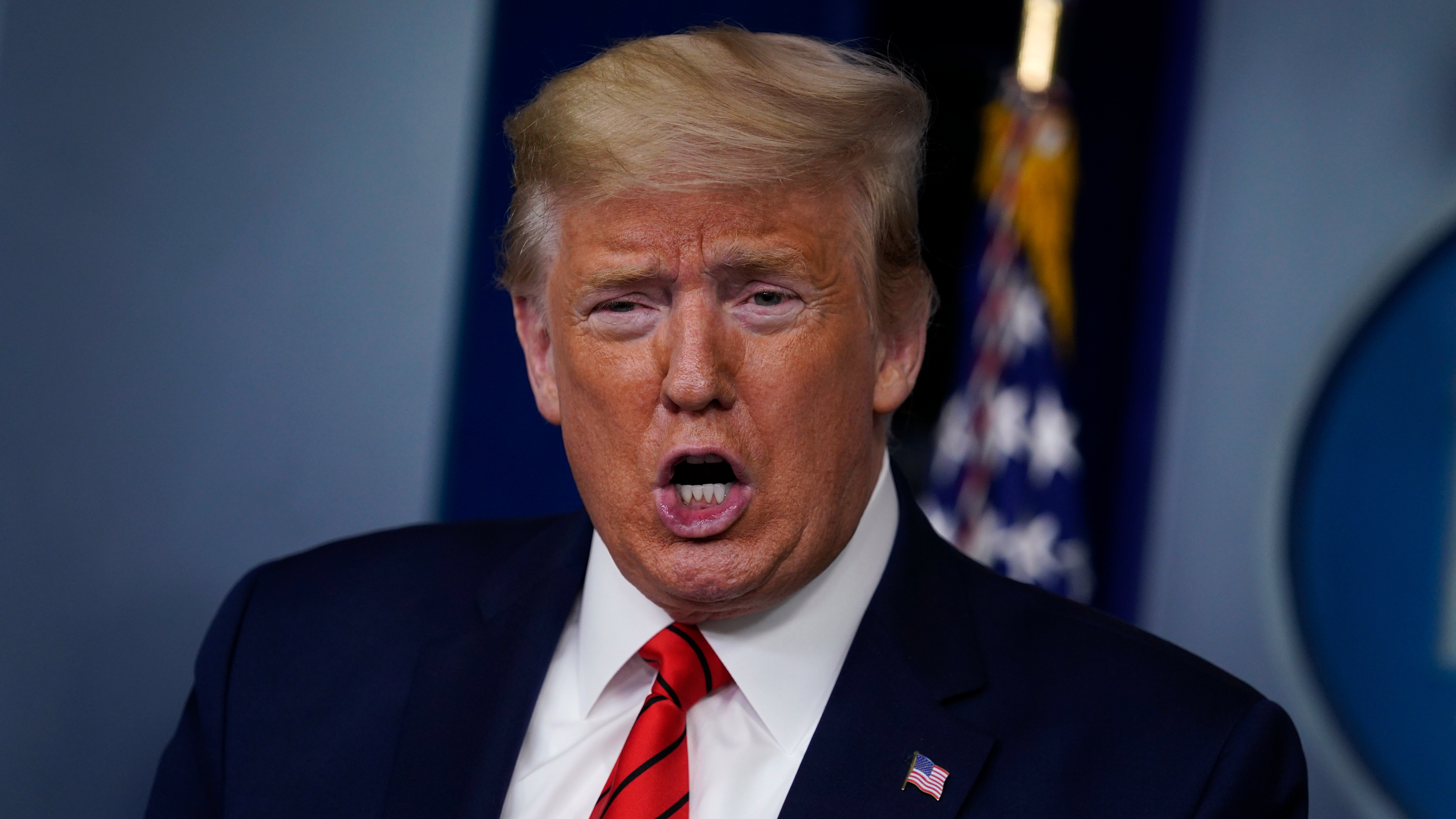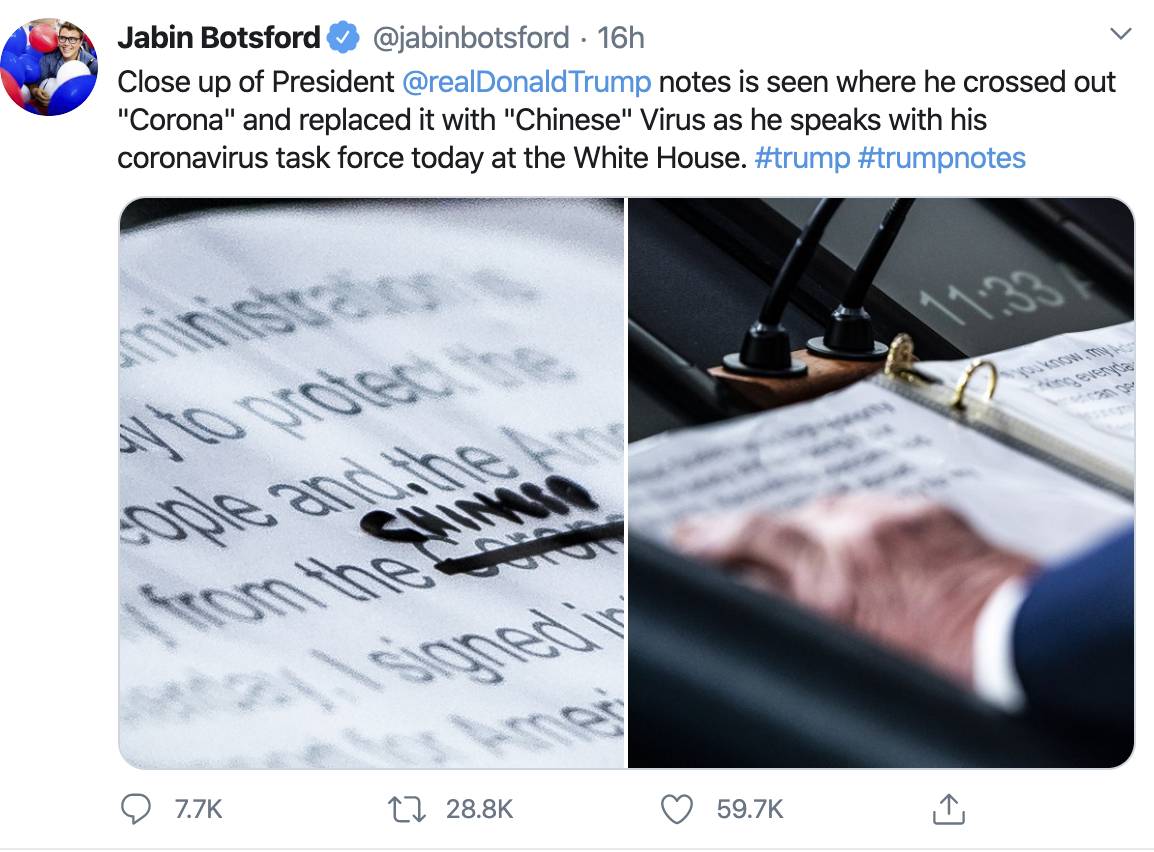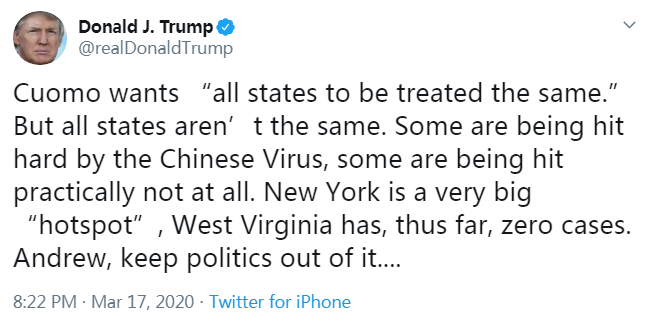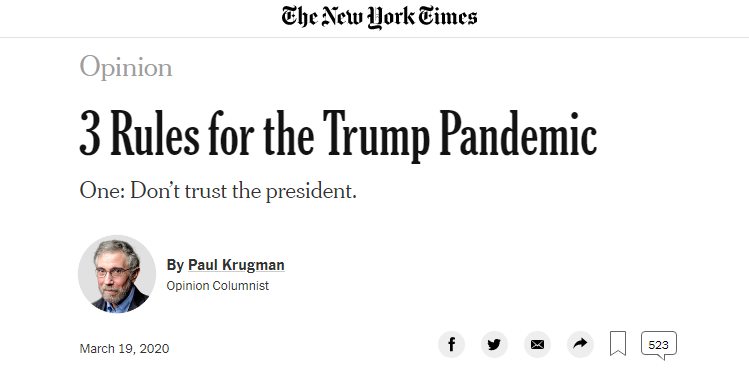
U.S. President Donald Trump speaks during a press briefing with the coronavirus task force at the White House, Washington, U.S., March 19, 2020. /AP
U.S. President Donald Trump speaks during a press briefing with the coronavirus task force at the White House, Washington, U.S., March 19, 2020. /AP
A photo of U.S. President Donald Trump's notes for his Thursday press briefing with the COVID-19 task force showed the word "Corona" crossed out and replaced with "Chinese," CNN reported.
This picture came as Trump stepped up his efforts to scapegoat China for the spread of the coronavirus, said CNN.

Screenshot of Jabin Botsford's twiiter post, the staff photographer at The Washington Post who captured President Trump's notes that crossed out "Corona" and replaced it "Chinese."
Screenshot of Jabin Botsford's twiiter post, the staff photographer at The Washington Post who captured President Trump's notes that crossed out "Corona" and replaced it "Chinese."
After initially playing down the threat and focusing on the stock market, the Republican president's tone on the pandemic has changed sharply in the last few days as confirmed COVID-19 cases surged.
The president of the United States publicly labeled the COVID-19 as "the Chinese Virus" for the first time on Tuesday, when the confirmed cases of COVID-19 rose to 5,000 in less than a month from the time when the first patient was diagnosed.
"The United States will be powerfully supporting those industries, like Airlines and others, that are particularly affected by the Chinese Virus. We will be stronger than ever before!" tweeted Trump.
He then repeatedly used "Chinese Virus" in several tweets, despite nickname he had made up immediately drawing criticism for inciting stigmatization and racial discrimination.
Read more:
WHO official warns against use of 'Chinese virus'
Hillary Clinton blasts Trump's racist 'Chinese Virus' remarks

Trump inflamed his rhetoric against China over the coronavirus on Wednesday, saying that Beijing should have given notice to warn the world earlier, dismissing criticism that his branding of the virus as "Chinese virus" was racist.
"I don't know if you'd say China's to blame," Trump said. "Certainly we didn't get an early run on it. It would have been helpful if we had known about it earlier. But it comes from China, and it's not a question about that – nobody's questioning that."
According to the Center for Systems Science and Engineering (CSSE) at Johns Hopkins University, the number of COVID-19 cases in the U.S. topped 13,000 as of 5:30 p.m. local time on Thursday (2130 GMT). The number soared more than 5,000 in a single day.
In the past two months, the Trump administration has been denying the urgency of the crisis and the response to the national emergency has been accused as slow.
On January 22, when Trump was asked by a CNBC reporter if the epidemic could turn to a "pandemic," the president said that it was not at all a thing.
"We have it totally under control… It's going to be just fine," he said.
Five days later, when there are around 60 confirmed COVID-19 cases, he said at a White House meeting that "it's going to disappear. One day – it's like a miracle – it will disappear."
Then on Tuesday he told reporters at the White House that "I felt it was a pandemic long before it was called a pandemic."
However, these words came only three days after he declared a national emergency last Friday, part of his movements to finally beef up the U.S. response to the crisis.

Paul Krugman, professor emeritus of Princeton University's Public and International Affairs School, wrote an op-ed at the New York Times on Thursday that bashed Trump for his attempt to cover-up his incapability by firing at China, saying that "racism and blaming other people for his own failures are the defining features of his presidency."
"The U.S. response to the threat has been catastrophically slow and inadequate," said Krugman, "and the buck stops with Trump, who minimized the threat and discouraged action until just a few days ago."
According to Johns Hopkins University's latest statistics, over 240,000 people worldwide has been infected by the virus and at least 10,000 have died.
The U.S. now has the fifth-most confirmed cases of coronavirus infections outside China.